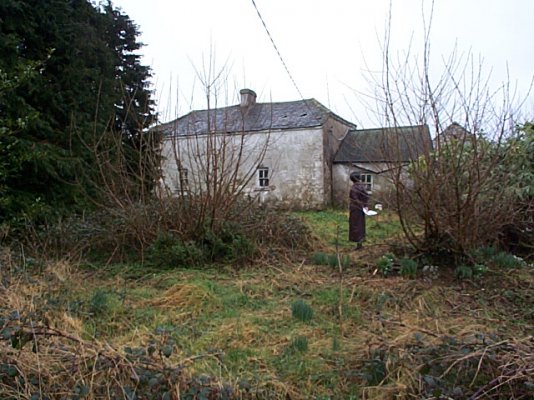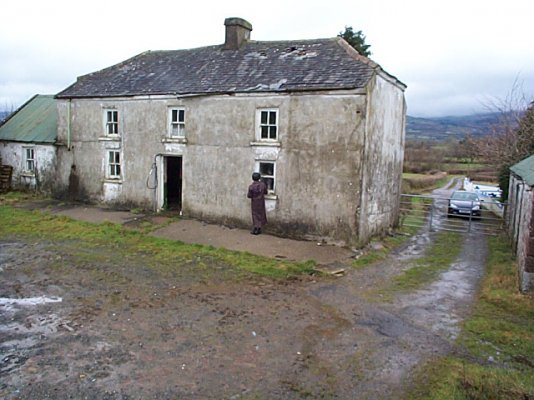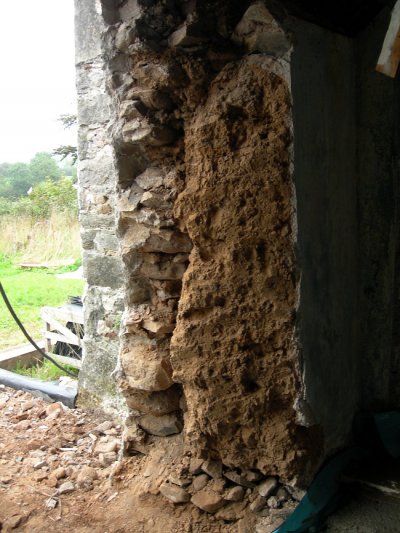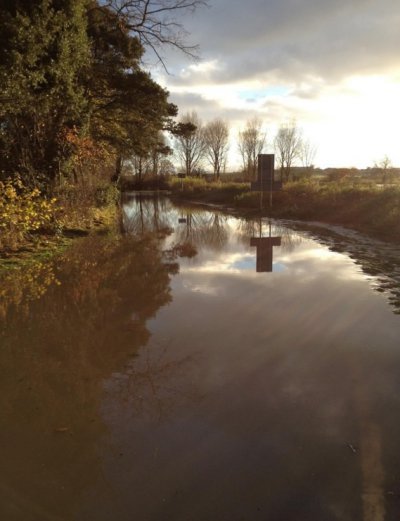tycarregydwr
Member
- Messages
- 169
That was unexpected. The conservation builder who came out last week - and with whom we had a lovely tour today of several amazing projects they've done - thinks that the hideous cement pebble-dashing might actually be keeping my house dry.
It's a late 19th century Victorian stone house - not a cottage exactly, slightly posher farmhouse style with evidence of quite good workmanship. From old photos and a thorough examination of what remains, she thinks that it was indeed originally bare stone, and not lime rendered. Unusual certainly, but not unheard of in the time period and there's good reason to believe this was the case. At some point, probably in the 1950s-70s, the weather wall only was rendered with cement pebble dash - as well as the floor being concreted. Now, there HAS been damage at some point - the first floor joists rotted in the wall and were repaired at least twice, though no idea when. BUT at the moment the house is dry. Floor is dry, walls are mostly dry (only damp as been obvious, localised penetrating damp due to broken gutters and drains, and at least two areas of this are where there is still lime plaster). Even the damp specialist was impressed. And two conservation builders have agreed that it is very surprising that it's dry, but that it is.
So we have discussed hacking off the modern plaster in the front room, and the cement off the outside - and either just restoring the lime pointing and leaving it at that, or considering lime render if needed.
But then the (highly recommended) bod said that upon further reflection, she wonders if the cement might indeed be 'sheltering' the house and keeping it dry, and we may want to consider leaving it, possibly painting it to make it less hideous.
At the moment I think we are planning to take the plaster off the inside so that we can properly assess the wall. If it is actually wet inside the wall, well then the cement isn't working and we're back to thinking it needs to come off. But if the wall is as dry as we expect it to be, ??? Is this the only case ever of cement actually working on a solid wall?
It's a late 19th century Victorian stone house - not a cottage exactly, slightly posher farmhouse style with evidence of quite good workmanship. From old photos and a thorough examination of what remains, she thinks that it was indeed originally bare stone, and not lime rendered. Unusual certainly, but not unheard of in the time period and there's good reason to believe this was the case. At some point, probably in the 1950s-70s, the weather wall only was rendered with cement pebble dash - as well as the floor being concreted. Now, there HAS been damage at some point - the first floor joists rotted in the wall and were repaired at least twice, though no idea when. BUT at the moment the house is dry. Floor is dry, walls are mostly dry (only damp as been obvious, localised penetrating damp due to broken gutters and drains, and at least two areas of this are where there is still lime plaster). Even the damp specialist was impressed. And two conservation builders have agreed that it is very surprising that it's dry, but that it is.
So we have discussed hacking off the modern plaster in the front room, and the cement off the outside - and either just restoring the lime pointing and leaving it at that, or considering lime render if needed.
But then the (highly recommended) bod said that upon further reflection, she wonders if the cement might indeed be 'sheltering' the house and keeping it dry, and we may want to consider leaving it, possibly painting it to make it less hideous.
At the moment I think we are planning to take the plaster off the inside so that we can properly assess the wall. If it is actually wet inside the wall, well then the cement isn't working and we're back to thinking it needs to come off. But if the wall is as dry as we expect it to be, ??? Is this the only case ever of cement actually working on a solid wall?




